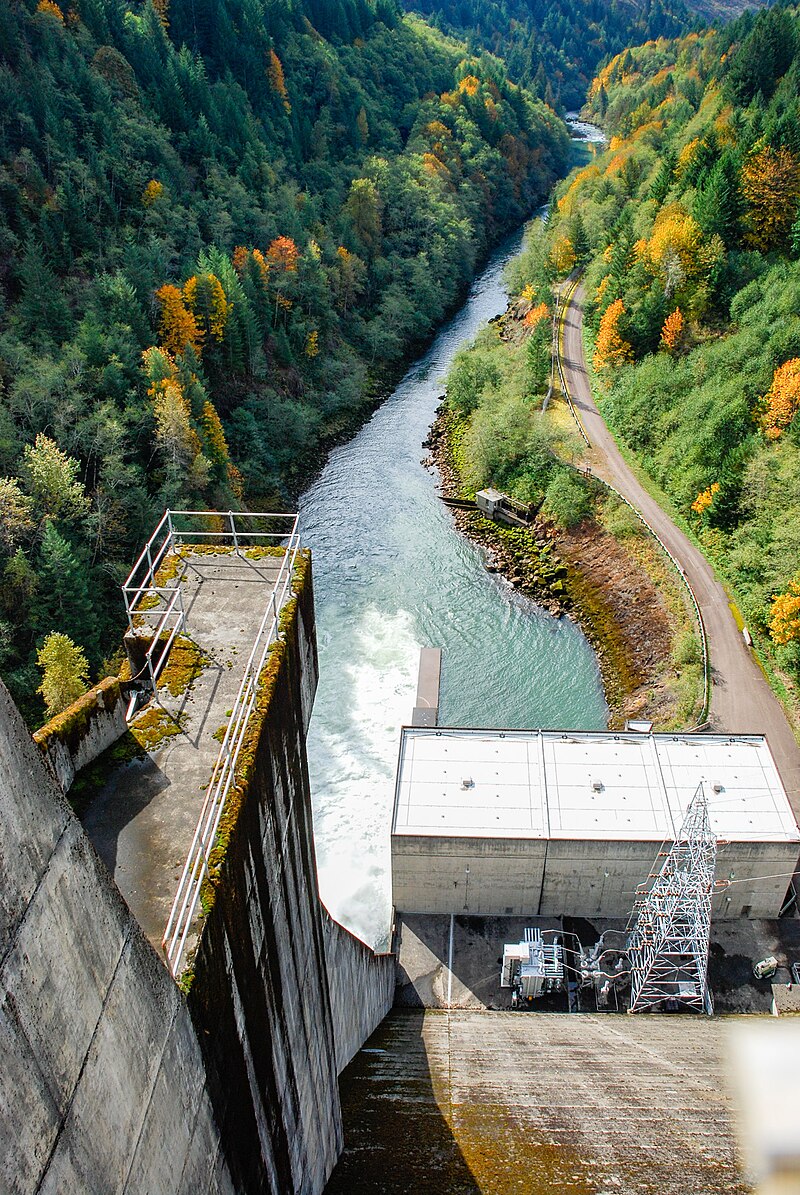Executive Summary:
Contrary to recent legal rulings, science, properly understood, strongly suggests that manmade dams are not in fact causing depletion of Salmon populations on the Columbia River and its tributaries. A closer look at the recent judicial decision to remove the Columbia River Dam is a tragic example of misinterpretation of scientific data. The issue deserves a second look, with a much greater diversity of public and scientific testimony before draconian measures are implemented.
Local observers and caretakers of the dam are nearly unanimous in their opinion that sea lions lying in wait at the base of the dam’s five fish ladders are the primary cause of the salmon depletion. This may be remedied by installation of a simple, steel protective “cage” to keep the sea lions away from the salmon entry points.
A related ruling regarding the Peter Dam is now leading toward similar tragic results. In recent years’ casual observers had noted an increase in turbidity in the upstream reservoir. Turbidity is the opaque, cloudy appearance due to suspended dirt particles, which constitutes the key test of water quality. Again, a team of pseudo-scientists convinced a local federal judge that the only way to reduce the turbidity was to dramatically reduce the water level and allow the reservoir to refill with clean water from upstream or rain.
A coalition of environment groups argued that draining the dam system is the only remedy the turbidity issue. Tragically, the judge was misled by this faulty reasoning and incomplete science. The decision of course will be devastating for a well-engineered system that sustains the quality of human, plant, and animal life on both sides of the Green Peter gorge.
Only three small problems with that solution. First, the dramatic lowering in water level, reduced the oxygen content to the point that most of the fish in the reservoir died off. Second, the water level was too low to generate electricity for the nearby town of Sweet Home and others. Third, the lower water level caused the mud banks of the reservoir to slough off resulting in more turbidity. The obvious, but overlooked solution was a fairly routine dredging operation to remove accumulated silt at the base of the dam.
In short, bad analysis and application can ruin otherwise good science. Almost always the problem is due either to a downstream predator or mismanagement of upstream habitat. In the case of the Columbia River Dam it’s recognizing that Sea Lions account for 50% to 70% of the problem. In the case of the Green Peter Dam 60% to 90% of the issue is upstream habitat improvement.
The Federal Judge’s ruling in 18-cv-00437-HZ on the Green Peter River is based on incomplete or misleading science. The published manuscript the judge relied on correctly identified the issue, but the proposed solution was faulty and is making the issue much worse.
Total cost of the dam removal project on the Columbia with its economic and environmental impact is estimated to be in the billions of dollars, compared to the proposed alternative of just two million.
Article:
One simple alternative is the construction of 5 Salmon Protection Devices to keep the Sea Lions from ambushing the Salmon as they enter the downstream fish ladder entrances. This is now under consideration by the Oregon Department of Fish and Wildlife. Initial feedback from the Private Forest Accord Grant Coordinator of the Oregon Dept. of Fish & Wildlife indicates that the Commission is excited about the proposal.
The Corp of Engineers is likewise enthused. Sally Bird-Gauvin, Program Manager, US Army Corps of Engineers Portland District is currently reviewing the Section 408 regulation check. She indicates that the project could be approved in as little as a few months.
Trey Fraley, Regulatory Project Manager, U.S. Army Corps of Engineers, Portland District in Portland, is willing to facilitate a project Joint Permit Application. He also revealed that the Corp sets aside November to January each year for this type of project.
These are encouraging signs that funding may be available as soon as March we will get the drawing Ceded up, bill of materials and then build the 30 foot by 10 foot by 20-foot structure made of 316 stainless steel with 6000 hold for only Salmon to get to safety.
The federal Judge’s Ruling in 18-cv-00437-HZ is based on incomplete science. Images below are from Green Peter Reservoir where fish are dying due to low water and lack of water.
A judge ordered the Corp to do a fish study with OSU, which will probably be all junk science.
The City of Sweet Home is suing the Corp. The fish ladder at Green Peter Dam has been shut down for quite a while said a Dam Operations person. He said “it was too expensive. He also said they know what the Federal Judge did is wrong. He also said the depth of the water is currently 925 feet and the fish are alive and generating electricity again. Two weeks ago it was down to 800 feet and the fish were dying because of not enough oxygen with low water level and couldn’t generate electricity”. He also said the Corp is netting fish from the upstream side to take them to the lower stream side.” Many fish are dying being crushed in the nets. The water level point is at the middle of the dam where its deepest. The images from January 4th 2024 are below. Figures 1 to 3 clearly the water is very dark because of sides of the canyon exposed to rain which is washing more dirt into the water making it worse not better.

Figure 1 water height gauge on upstream side of Green Peter Dam.

Figure 2 Perspective from upstream side of Green Peter Dam on how low the water is.

Figure 3 More perspective from upstream side of Green Peter Dam on how low the water is.
Dave will be contacting OSE to try to get the preliminary results of the study I talked with Ivan Arismendi of Oregon State university 541-7372639. Ivan is part of the original team with a published manuscript about reservoirs. He said the findings in the manuscript is turbidity in the fish ladder water was killing the fish. To fix this they said to draw down the water and thereby releasing the turbidity. However, Ivan agreed with me when I said the turbidity issue is because of buildup of sediment on the upstream side of the dam. When water slows the sediment drops out. We need to dredged behind each dam to reduce the sediment buildup. The fish ladders will run with clean fresh
water.
Conclusion:
To improve all salmon runs, the fish ladders need to be improved and most of the sediment buildup behind the dams needs to be dredged up.



Leave a Reply